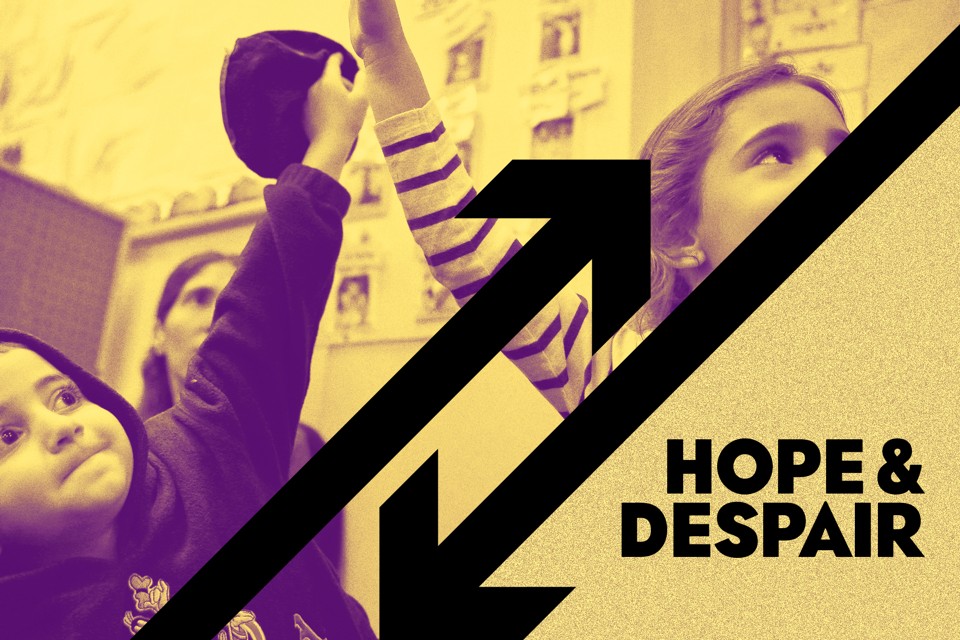There are few subjects on which school officials, parents and advocates for students are more impassioned and divided, which is why the proposal to open hundreds of new charter schools for Los Angeles' students is shaping up as an epic education battle. But now a new study out of UC Berkeley — looking specifically at charter school performance in the Los Angeles Unified School District — provides a more nuanced view, showing that the yes-no, either-or attitude that tends to dominate the debate is not only misguided but also counterproductive.
The study found that students who enter charter high schools within the district are already higher achievers than those entering traditional public schools. The same was true of elementary schools, though it's harder to estimate the differences there. Middle school students started out no more advanced.
Once students are enrolled in charter schools, their academic growth was slightly steeper in elementary schools than it would have been in a traditional L.A. Unified school; far steeper in middle school; but not better at all in high school.
The Berkeley study also backs up a long-held contention of charter opponents: Simplistic comparisons of student test scores from both kinds of schools, charter and district, don't necessarily give the public useful information — because the students begin at different levels of achievement. Most likely that's because parents who are savvy and proactive about their children's education — the kinds of parents who give their kids a head start on their schooling — are more likely to find out about charter schools in the first place, attend their meetings, enter the lotteries for admission and then help their children succeed at those schools.
Policymakers, school officials and charter supporters should all be paying attention to the new research. There have been previous studies on L.A. Unified's charter schools, the most important of which came from Stanford University and found that when similar students attended charter and district schools, the charter students learned more. What the Berkeley study adds is a first look at differences between students when they arrive at the schools and at which grade levels charters offer the most advantage. This information can help educators determine which kinds of schools will do the most good. L.A. Unified leaders, rather than viewing the charter push with dismay, should be figuring out what makes charter middle schools work better and emulating them.
The California Charter Schools Assn. also reacted defensively when the new research was released. Instead, it should try to figure out what it can learn from the new data. The researchers aren't saying that charter schools are without value; on the contrary, they're praising the middle schools that work so well and suggesting that perhaps they have something to offer to improve education for disadvantaged students at all levels. Charter schools should be willing to change their ways in response to new data; their defensiveness makes them seem a lot like the traditional public schools they criticize as being hidebound and self-interested.
More study is obviously needed, both to confirm the Berkeley findings and to understand the effect of charter schools on education in Los Angeles Unified. For instance, what's the effect on district schools if charter schools draw off higher-achieving students? Obviously, the district schools lose money when state and federal dollars follow those students to their new schools, but another important question as the number of charter schools grows is what the effect will be on the culture of schools and on their achievement levels as more motivated parents and their children abandon district schools.
It's tempting to imagine a district in which the two sides worked together to enhance education. The school board could welcome outstanding charter middle schools, and learn from those that do the best job. Charter management organizations could take steps to recruit more low-achieving students, to level the playing field between their schools and district schools.
Better yet, the district and charter schools in it could make the confusing landscape of school options easier to navigate by creating a one-stop online shop where parents could find out all about the educational offerings reasonably close to their homes, including the neighborhood schools, magnet and pilot schools and independent charters. That site could include research from studies like those at Stanford and Berkeley, and information about the rules governing the different schools. Parents might not realize, for example, that even though some charter schools have told parents they have to volunteer in order for charter schools to enroll their children, state law prohibits such requirements.
Or both sides — the charter supporters and naysayers — could keep arguing, but that way, everyone loses, especially students.
______________
CAVEAT 1:Disclosure: The Times receives funding for its digital initiative Education Matters from the California Endowment, the Wasserman Foundation and the Baxter Family Foundation. The California Community Foundation and United Way administer grants from the Eli and Edythe Broad Foundation to support this effort. Under terms of the grants, The Times retains complete control over editorial content.
CAVEAT 2: "You get what you pay for." - John Arbuckle













